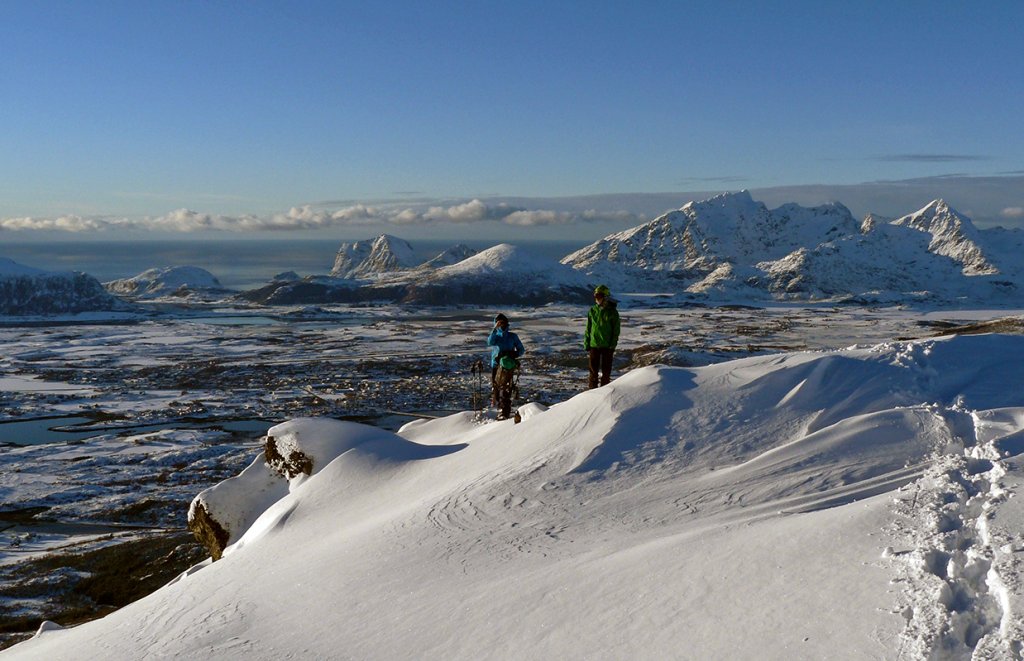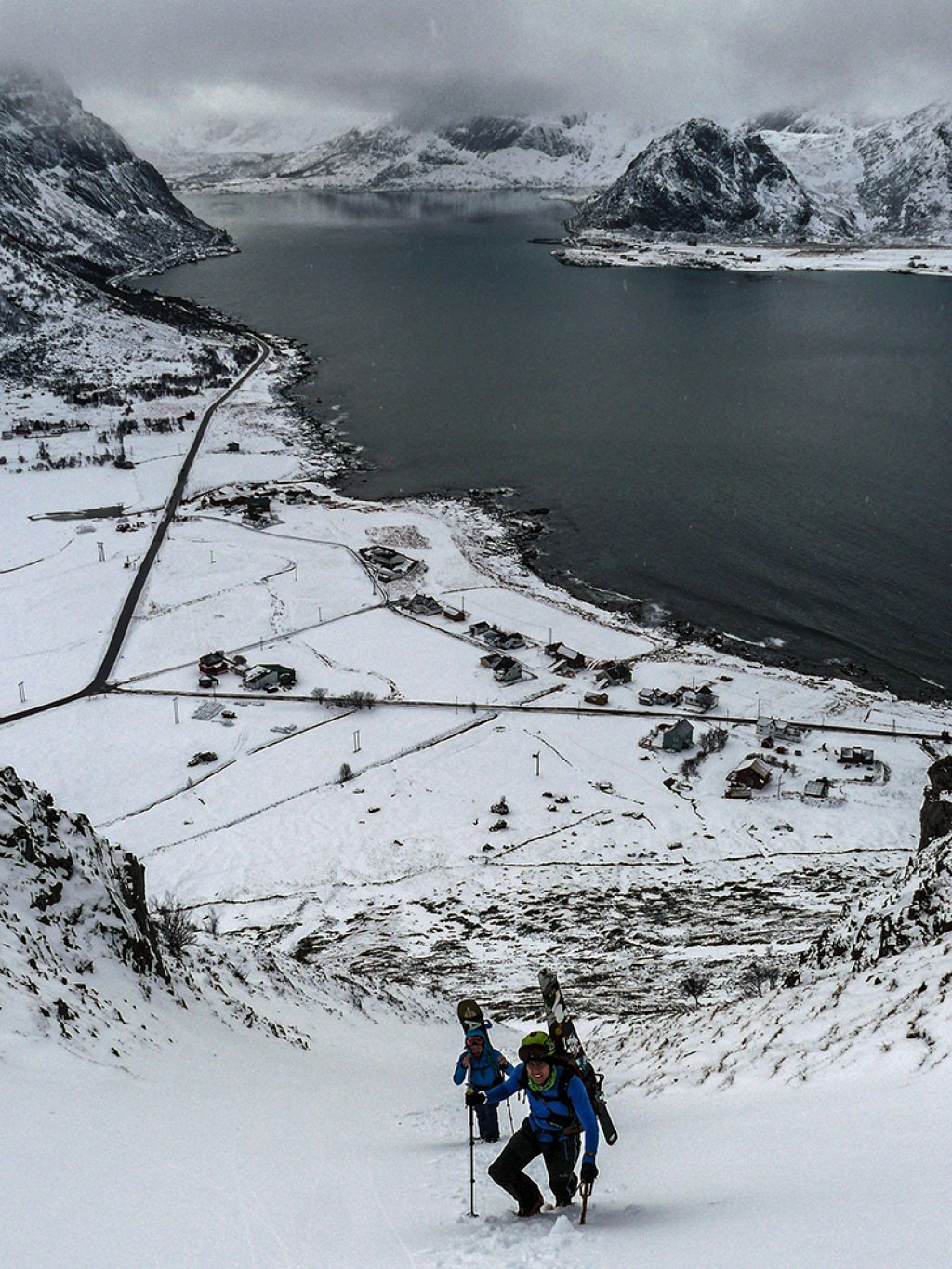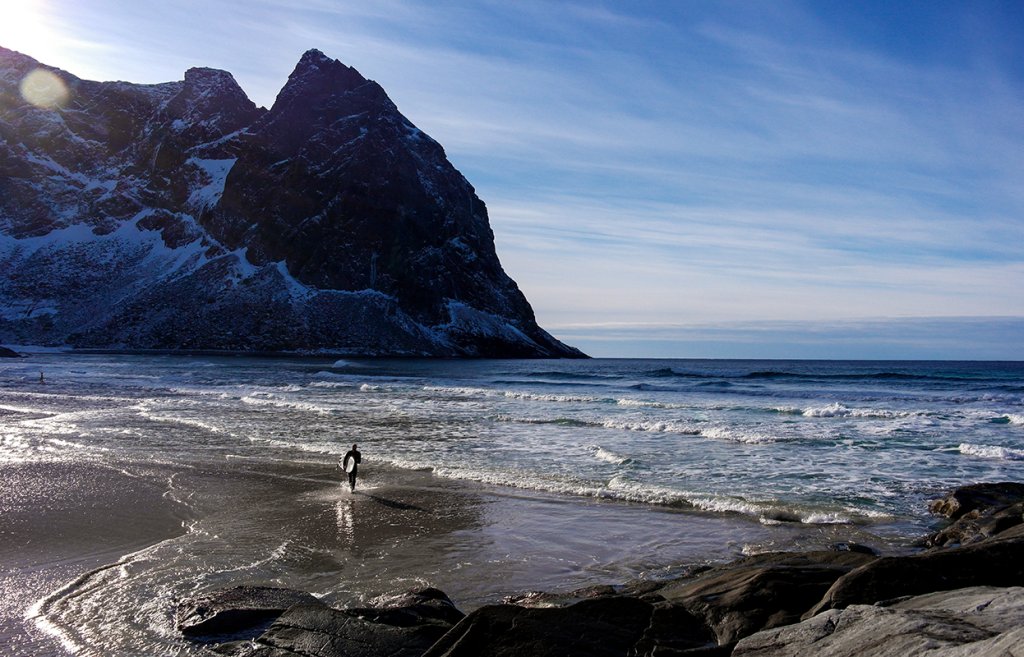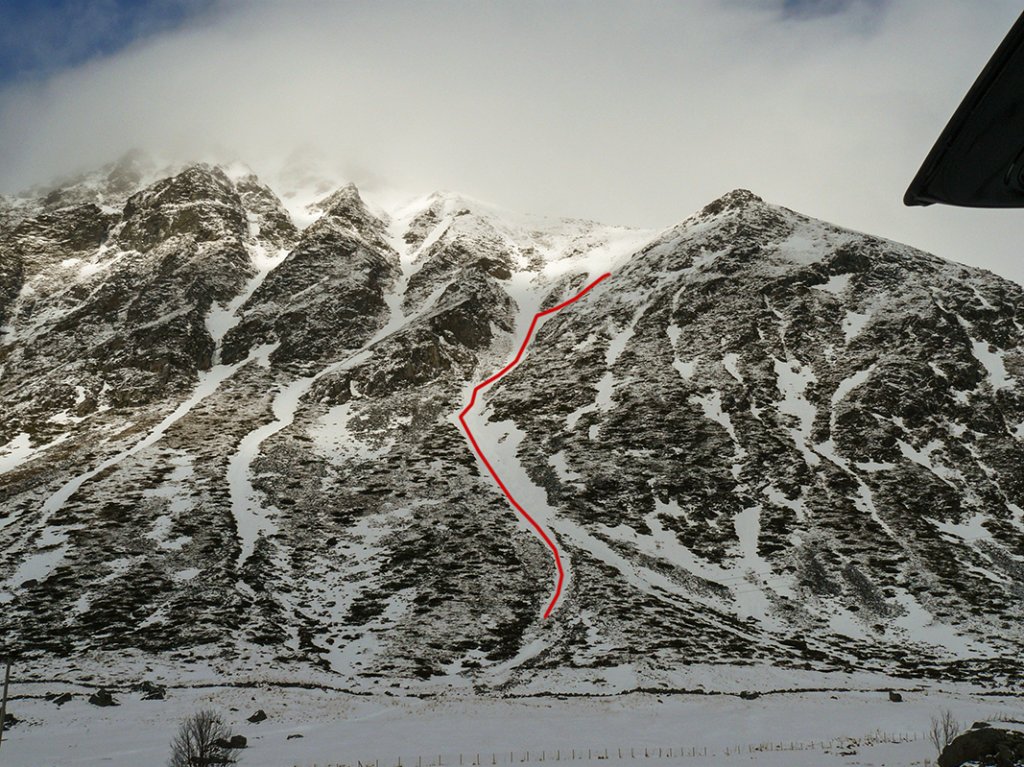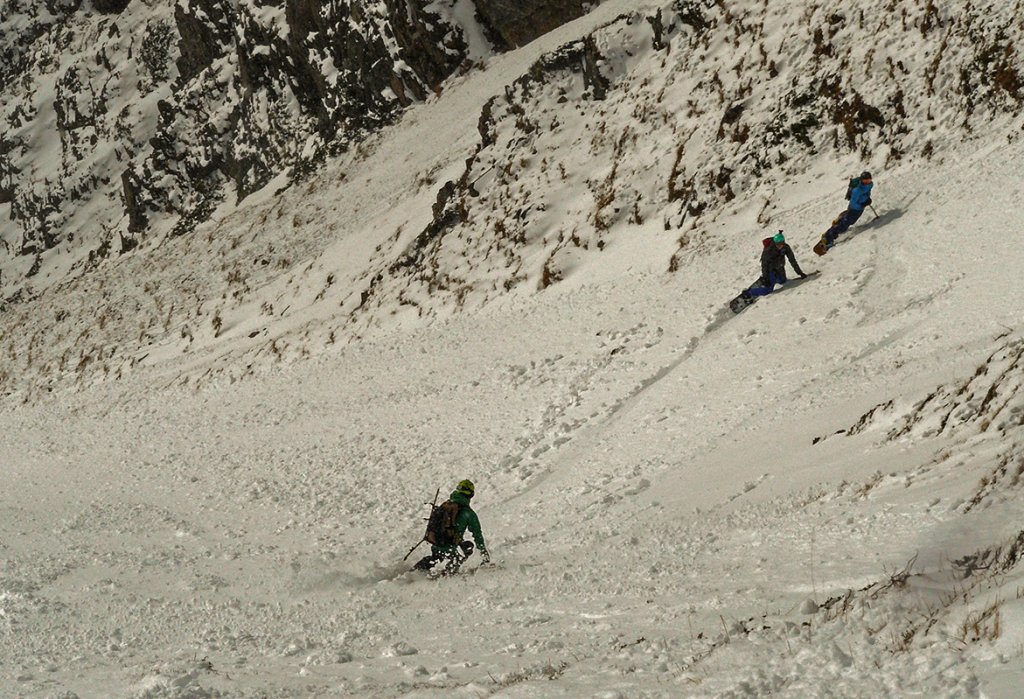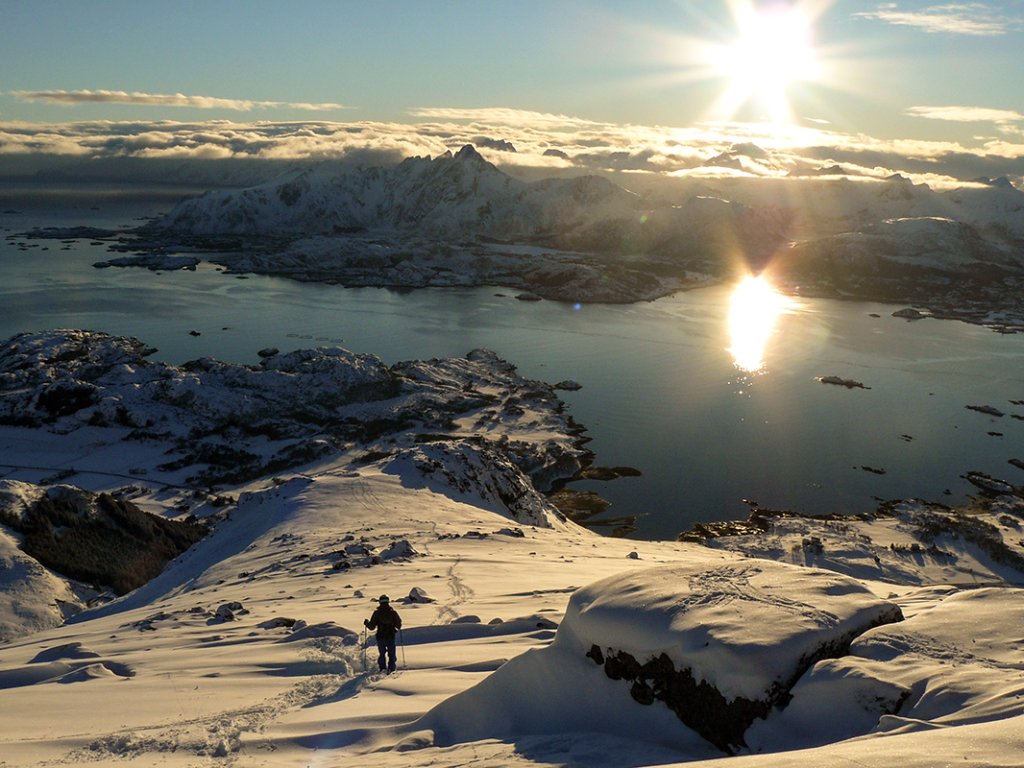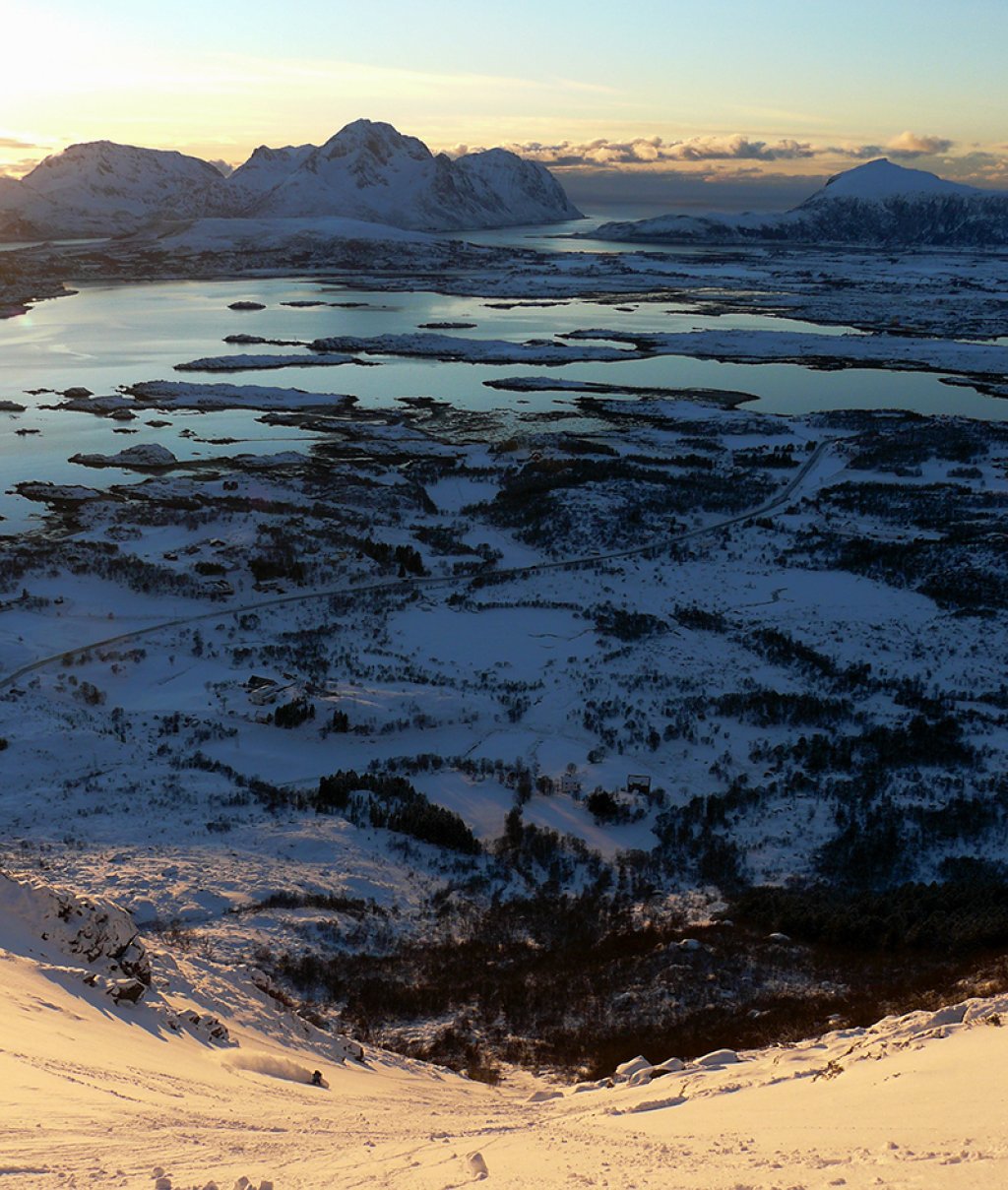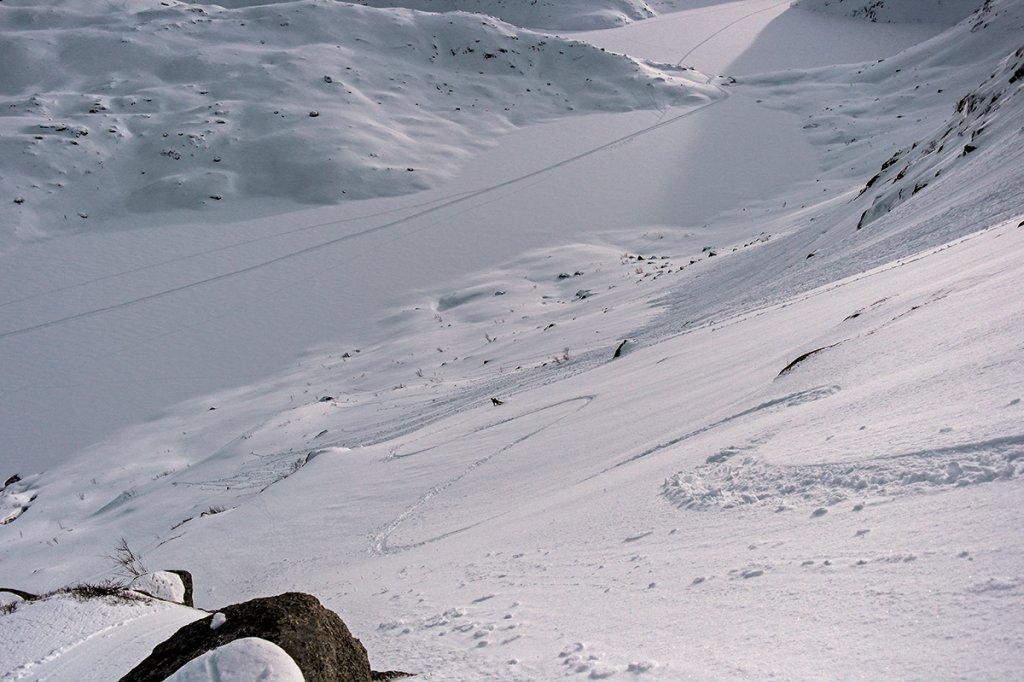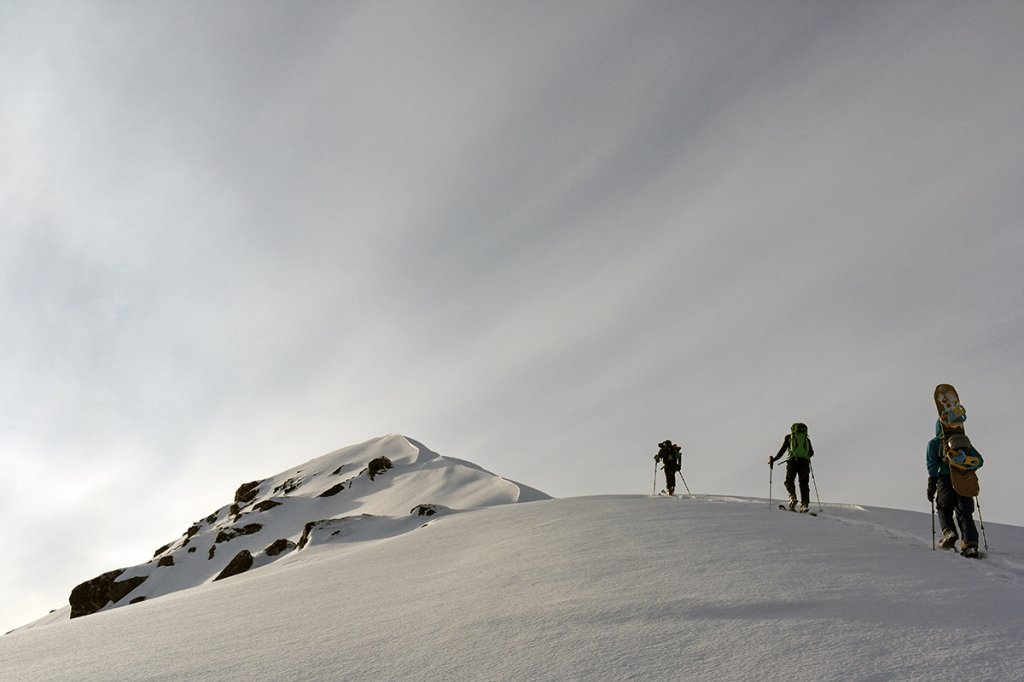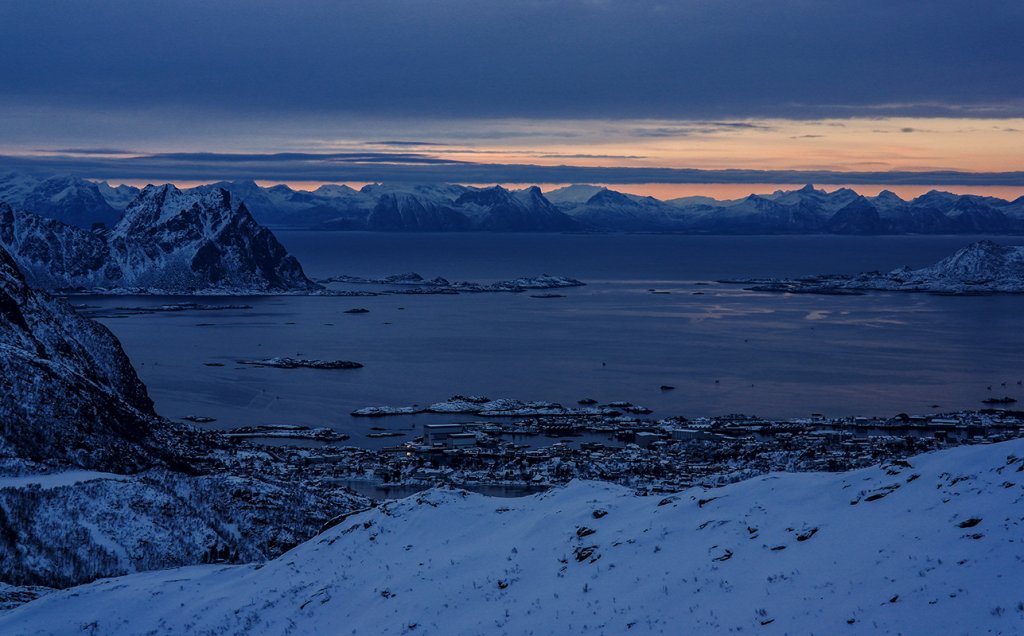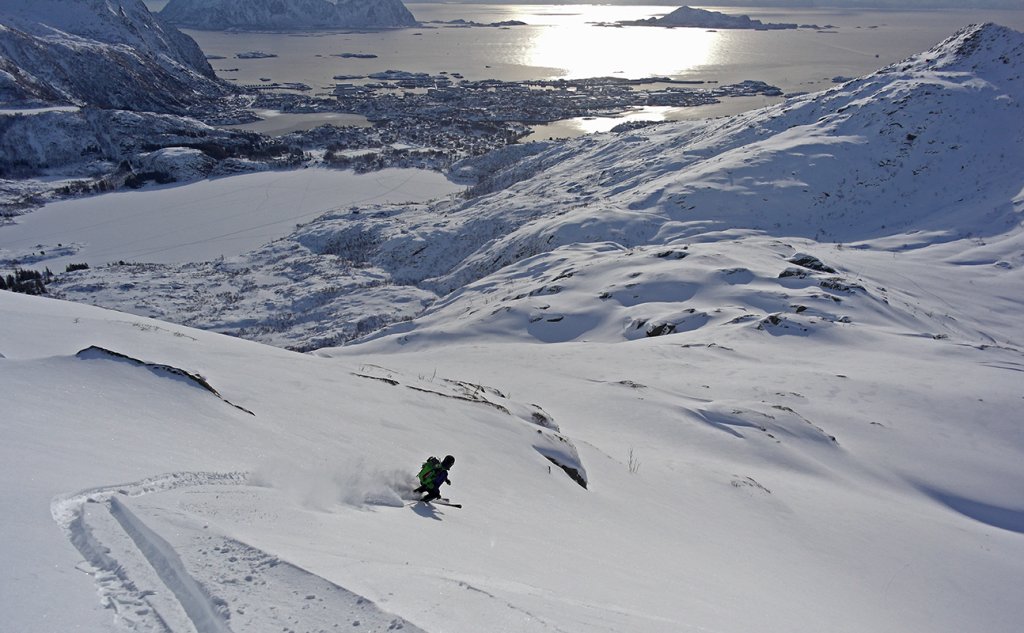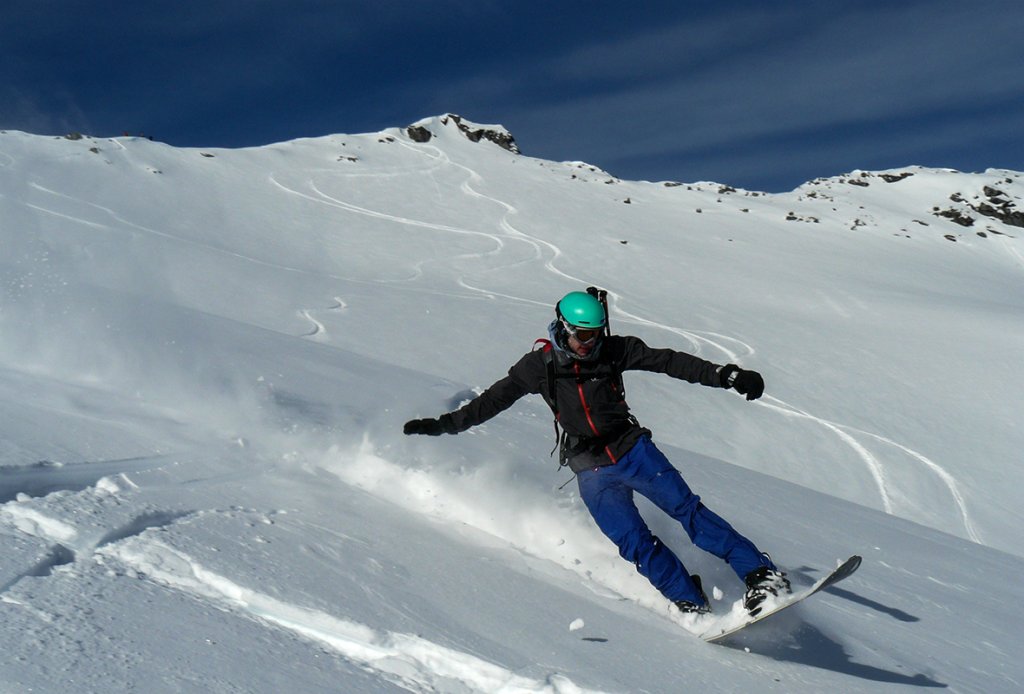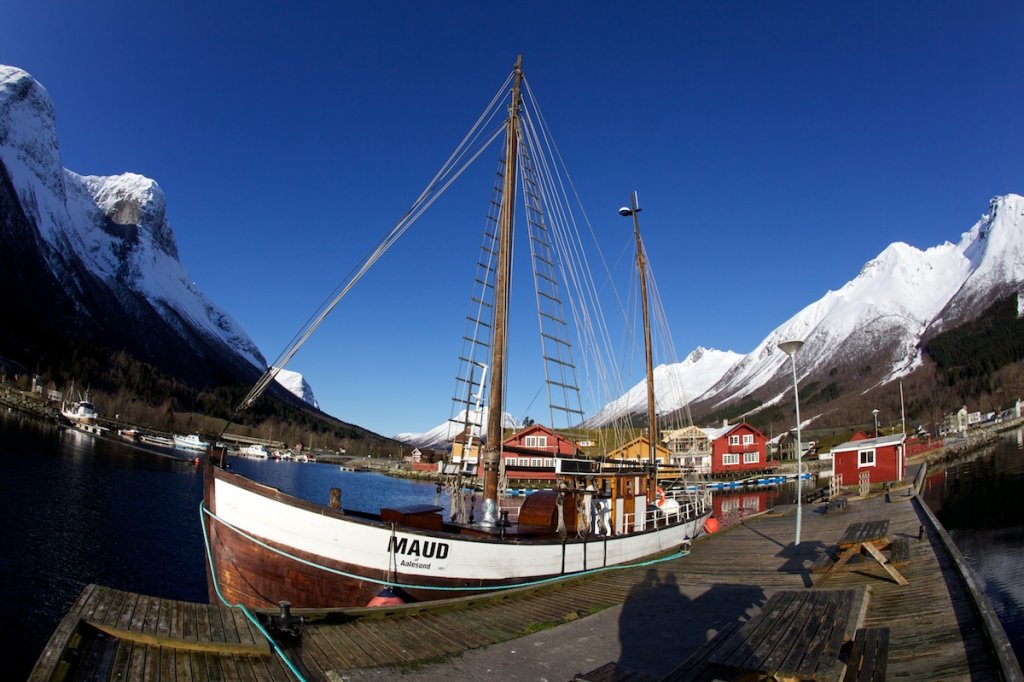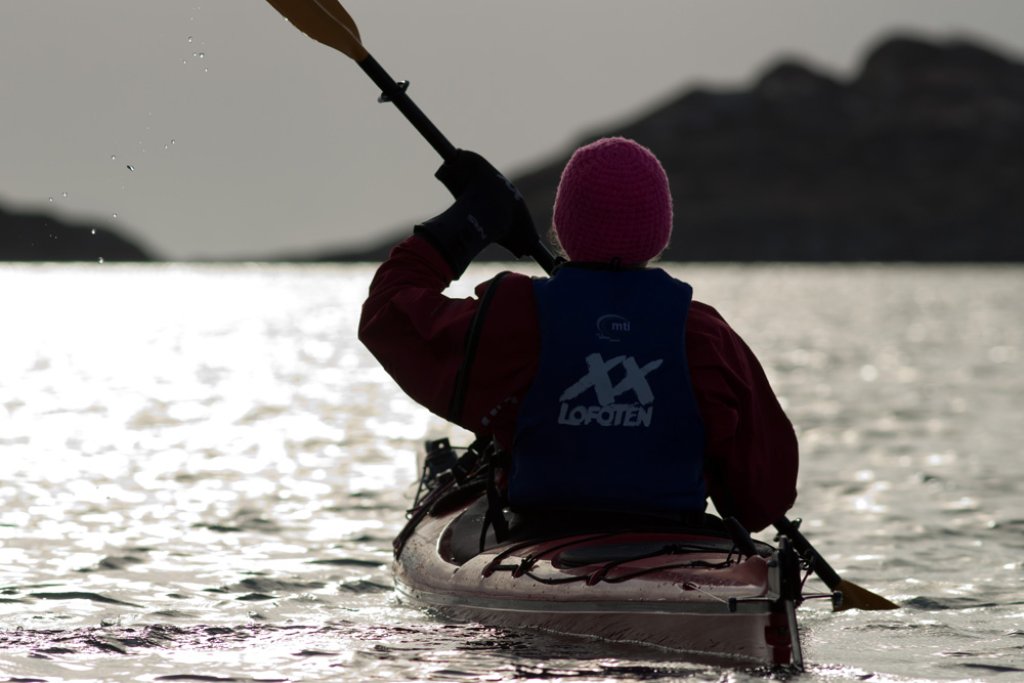The initial situation
Many other exchange students in Trondheim had opted for a flight to Tromsø and a vacation in Lyngen. Fortunately, we - a Spaniard, two Bavarians and a Swabian - had a VW van called Osskar at our disposal. A comparison of travel times (1 day Lofoten vs. 1½ to 2 days Lyngen) determined Lofoten as our destination long before departure. Ski tours were of course at the top of our list and our sparse planning was aimed at getting the most out of themThe ferry to Moskenes, the westernmost island in the group, had already been reserved for a long time and so we would start our trip in the part of the Lofoten Islands with the least snow. We had planned very little else in detail in order to retain as much freedom as possible in our choice of activities. Researching tour tips, buying a map and studying it a little - apart from packing and buying food, these were the only things we did in advance. In view of the extremely unreliable weather forecast (which is almost always off the mark, even when looking back over the past few days), more detailed planning is not worthwhile in most cases and quickly leads to disappointment.
From 0 to 100
After a full day's arrival and a first night in a hut or tent, our fears were confirmed: Almost no more snow on Moskenesøy and Flakstadøy, mostly just 'dust on rocks'. What a shame, because the combination of sea and mountains is one of the most beautiful here in the west? As on the previous day, our stupidly astonished faces dominated the drive to the east as even more beautifully shaped peaks, boulders, cliffs, beaches and couloirs appeared around every bend. So it happened that just half an hour after leaving our overnight accommodation (Selfjordhytta), we couldn't stand it any longer and parked in the village of Vareid, with a feasible couloir in front of us and the sea behind us. The long warm phase in mid-March had cleared a lot of tricky terrain, so we found the gully well filled with frozen avalanche snow, plus a thin layer of loose snow. However, winter sports were no longer possible here outside of such gullies. The ice axes, which we had only borrowed for safety reasons, were therefore used on the very first day. We assume that we were the first to ski the couloir and are making this public in this way. From now on, the gully will bear the name 'Kari-Enge-Couloir' in honor of the very helpful Erasmus contact person at NTNU Trondheim. We will only relinquish our first ascent status after providing photographic evidence to the contrary.
The day ended with the best weather, a leisurely tour through the main gully of Guratinden (near Leknes) and a not quite so leisurely night on the Kvalvika surfing beach. The latter is also known from the movie 'North of the Sun'. The driftwood hut built by the surfers is still standing and - if you can find it in the rocks - offers dry accommodation and a wetsuit (size M, fits snugly). So Benni hadn't dragged his surfboard into the not-so-easily accessible bay for nothing. In the morning (he had overslept) he was able to use it for the first time north of the Arctic Circle. What a debut
.